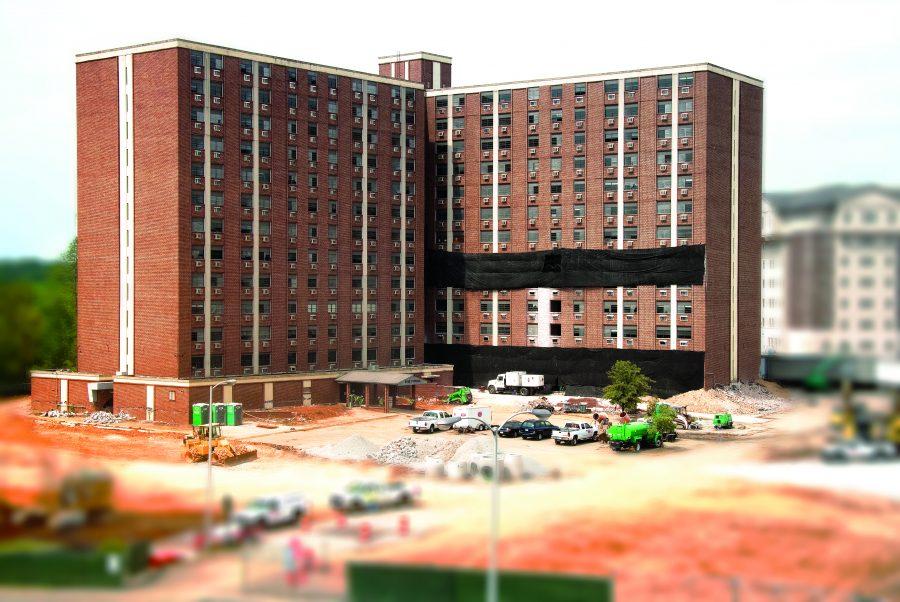Before the air in Tuscaloosa is filled with fireworks this Fourth of July, it will be filled with dust from the demolition of the 43-year-old University of Alabama residence hall, Rose Towers
The towers are coming down at approximately 8 a.m. the morning of July 4. In a matter seconds, the building will be demolished by implosion. Chris Bryant, a UA spokesman, said implosion was the safest route.
“Implosion is the safest and most expeditious way to demolish a building of this size,” Bryant said. “Implosion will bring the building down on itself in a carefully controlled manner.”
Bryant said he was told about 400 pounds of explosives will be used, and all of the charges are placed on floors one, two and six. The charges will then be ignited in a way that the center of the building will collapse first, followed by the outside parts collapsing in. Floors one, two and six are already gutted in anticipation of the implosion, and all elevators will be removed beforehand.
Debris clearing will take about two months, Bryant said, but the university will recycle appropriate materials. These materials have already been removed from the building, such as the fire alarm system, which was only a few years old and can now be used elsewhere on campus.
Built in 1969, Rose Towers originally served as married student housing, according to Kevin Ray, institutional records assistant at Hoole Library. Ray said Rose Towers was named for Tommye Rose, the wife of UA President Frank Rose who served from 1958 to 1969.
Ray said as far as he could tell from his research, Rose Towers has always been used as a form of student residence, though it did house a childcare center for many years.
Whitney Watson, a junior who lived in Rose Towers her freshman year, said she has mixed feelings seeing the building go.
“While I was living there, I was sick for the better part of the year due to the mold and dust everywhere,” Watson said. She also remembers having to evacuate often because of fire alarms.
“One of its multiple nicknames was ‘Roach Towers’ for a reason,” Watson said. “Part of me is happy to see it go because it was an old and deteriorating building. But at the same time, I’ll miss seeing it when I drive by the river, and I’ll always cherish the memories I made there.”
The demolition of Rose Towers will make way for the second phase of the Presidential Village Residential Community, which is expected to open in August 2014. The first phase is currently under construction and is expected to house 971 students by August.
Bryant said he was told the second phase will be much like the first — with two and four bedroom suites — but will have about 100 fewer bedrooms.
He also said part of the site will be used for the construction of a Student Activity Center, which will include new recreation center facilities.
The public can view the demolition of the towers this Wednesday in the Riverside East parking lot. Visitors can park in the lots around Shelby Hall and at the Campus Drive parking deck. Those who plan to use these parking lots should take University Boulevard to Hackberry Lane.
Several roads and trails will be closed the morning of the demolition, including Manderson Landing, Jack Warner Parkway, Hackberry Lane and Old Hackberry Lane, in the vicinity of Rose Towers. These roads will close at 6:30 a.m. and reopen one to two hours after the demolition.
Viewers should also be aware that though the demolition will only last a few seconds, the air will remain dusty for 10 to 15 minutes following the implosion.










